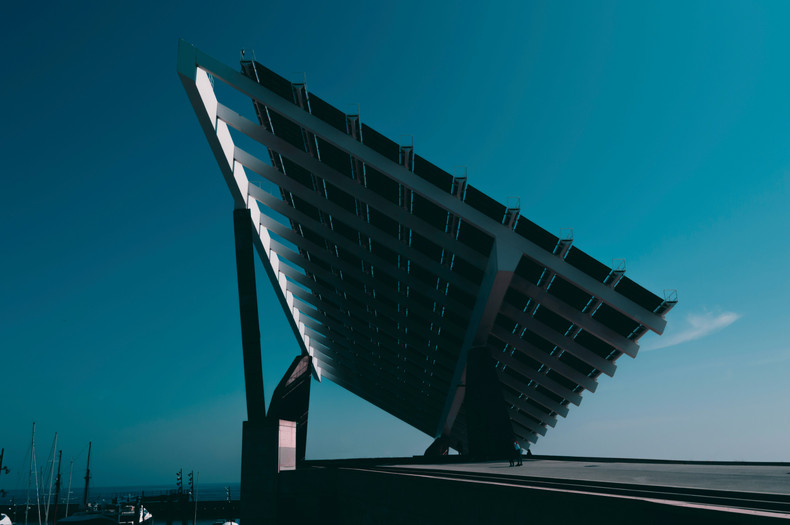With the cost of solar power continuing to fall dramatically, more homes and businesses in India are embracing solar energy as an alternative to polluting fossil fuels. One exciting solar technology innovation is bifacial solar panels, which can generate up to 25% more energy than traditional panels.
Bifacial solar panels absorb sunlight on both their front and rear surfaces, allowing for increased electricity production. However, to fully capitalize on a bifacial system’s energy-generating potential, it requires strategic planning and smart installation. In this blog we’ll explore top tips and tricks for deploying bifacial panels to maximize solar energy generation.
Carefully Consider Panel Locations
Locating bifacial solar panels to receive reflected light is key. Areas around the panels need to have high albedo (reflectivity) surfaces to bounce light onto the back of the bifacial panels. Ideal locations include those over white rooftops or low-lying vegetation. Asphalt and bodies of water are also decent reflectors. Avoid shaded areas or locations surrounded by light-absorbing surfaces when planning out your solar site.
Leverage Elevation
Mounting bifacial solar panels at an elevated position above the ground or rooftop increases light exposure on panel backs. Optimal elevation is site-specific, but studies show bifacial systems see substantial rear-side generation gains when elevated around 0.5–1 meter off the mounting surface. Higher elevations lead to better irradiation; just ensure the structure meets wind load and seismic requirements.
Mind Inter-Row Spacing
Allow adequate spacing between rows of bifacial panels so light can hit and reflect off the ground. Panel row spacing will depend on geographic location and factors like latitude and average solar irradiation. For adequate rear-side light absorption, we recommend inter-row separation starting around 2.5 meters, though wider spacing is ideal if space allows. Also consider seasonal sun angle variances when designing row layouts.
Use Single-Axis Trackers
To further boost light exposure, deploy single-axis solar trackers under elevated bifacial panels, enabling them to tilt and orient towards the moving sun throughout the day. This enhances total light absorption and offsets some suboptimal site conditions, like low ground reflectance. While trackers add cost their energy generation lift usually provides an attractive return on investment.
Model Shading Objects
Survey your site and pinpoint all potential shading objects, like buildings, trees, and utility poles. Then overlay your planned bifacial solar array layout using modeling software to simulate shading impacts over the course of a year. Tweak layouts to minimize shading, which hampers backside light exposure. A few trees may be okay, but avoid large shading obstacles.
Incorporate Diffuse Reflectors
Strategically place diffuse “boosters” around bifacial panels to scatter and reflect additional light onto rear surfaces. Cost-effective reflector options include painting adjacent walls or fences white, securing reflective film to barrier boards, or laying down white gravel around solar supports. Enhance reflectivity directly under panels by painting the mounting structure rails white.
Analyze Rear-Side Contribution
Maximize return on investment by studying rear-side light contributions within your specific bifacial system and location. On-site testing devices like albedometers paired with solar modeling tools can quantify rear irradiance and correlate to energy yield based on local conditions. Let projected gains influence design and installation decisions like panel elevation and orientation.
Embrace Technology Innovations
Capitalize on the latest bifacial solar innovations to further enhance system performance. Examples include using UV-resistant backsheets with superior reflectivity or clear backsheet panels that allow light to pass through. Bifacial solar cells in varying transparent fractions also impact light absorption. Stay updated on product advancements that can optimize electricity generation.
Adhere to Codes and Standards
While bifacial solar panels introduce exciting opportunities, they also come with unique structural considerations given their elevated, transparent form. Ensure your planned projects meet all civil engineering expectations and local codes for aspects like wind and snow loading capacity and fire safety. Also check electrical standards, which may require adjusted sizing of components like inverters and transformers.
Conclusion
With their ability to potentially produce up to 25% more clean energy than traditional solar panels, bifacial PV systems provide an extremely attractive path to affordable and sustainable power. Yet unlocking that additional rear-side generation requires in-depth planning plus smart bifacial panel placement and configuration tailored to your specific conditions. By following these tips and tricks around site selection, layout, mounting, and orientation, you can maximize returns from your solar investment.
When you’re ready to discuss transitioning to cost-saving bifacial solar or have questions on optimizing systems, Waaree is here to help you. As India’s leading solar PV panel manufacturer and EPC solutions provider, we have unparalleled expertise in engineering high-efficiency solar systems, including emerging innovations like bifacial technology. To learn more about how Waaree’s solar offerings, including bifacial and double-sided solar panels, can provide the high-efficiency, low-emission clean energy solutions India needs, together we can build a brighter, more sustainable future empowered by the country's immense solar resources. Contact Waaree today to evaluate your needs and deliver a custom bifacial solar design for your residential or commercial property.



